Comments / Questions (48)
![]() Marie wrote:
Marie wrote:
Bonjour, Est-ce mieux de bloquer la pièce avant de l'assembler ? Merci
20.09.2017 - 15:14DROPS Design answered:
Bonjour Marie, chacun a sa propre technique et habitude, n'hésitez pas à demander conseil à votre magasin DROPS si besoin. Bon tricot!
20.09.2017 - 15:59
![]() Edith Hoekstra wrote:
Edith Hoekstra wrote:
Hallo! Ik begrijp uit onderstaande antwoorden dat dit bolerootje in zijn geheel met twee draden wordt gebreid. Hoe kan het dan dat van het ene garen 150 gram nodig is en van het andere slechts 50 gram (maat S/M) ? Bij voorbaat dank voor uw antwoord: ik hoop dat ik het snel krijg, dan kan ik het garen gaan bestellen, mijn handen jeuken! 😂
04.09.2017 - 15:16DROPS Design answered:
Hallo Edith, Dat komt omdat kidsilk veel dunner garen is en dus een langere looplengte heeft. Daardoor heb je er minder bollen van nodig.
04.09.2017 - 16:27
![]() Heike Lorenz wrote:
Heike Lorenz wrote:
Vielen Dank für die schnelle Antwort. Jetzt blicke ich durch. Nun kanns weiter gehen. Vielen Dank mochmql
31.07.2017 - 20:26
![]() Heike Lorenz wrote:
Heike Lorenz wrote:
Hallo. Bin gerade überm Stricken und habe eine Frage zu A3 und A4. In Reihe 7 werden nach dem Umschlag de facto 3 Maschen zusammengestrickt. Wenn ich A4 dann als Maschenschritt nehme und immer wiederhole - muss ich dann nur 2 Maschen rechts zusammenstricken, da ja die 3. Masche in A3 ist. Danke.
30.07.2017 - 21:43DROPS Design answered:
Liebe Frau Lorenz, bei der 7. Reihe wird die letzte Masche im A.3 zusammen mit den 2 ersten Maschen in A.4 gestrickt (neue letzte Masche in A.3 ist der Umschlag), dann die letzte Masche im A.4 wird mit den 2 ersten Maschen bei dem nächsten A.4/bei A.5 gestrickt. Viel Spaß beim stricken!
31.07.2017 - 10:30
![]() Sigrid wrote:
Sigrid wrote:
Ich möchte das Modell in Bomull-Lin stricken. Sind 200 g ausreichend oder brauche ich mehr?
02.06.2017 - 18:15DROPS Design answered:
Liebe Sigrid, hier finden Sie, wie Sie die neue Mengeangabe kalkulieren sollen. Viel Spaß beim stricken!
06.06.2017 - 08:28Kate wrote:
Hello! Schemes A.1-A.2: if I understand the pattern correctly, size s requires 17 times A1, and then A2. Questions: 1) While doing consecutive A1 in the third row, should I make 1 or 2 YO between the two A1 (ending one A1 and one starting next A1, or is there only 1 YO)? 2) What exactly should I do in 4th row with YOs from the third row (treat them as left or right sts)? Thanks!
03.01.2017 - 13:56DROPS Design answered:
Dear Kate, on 3rd row, the 2 yos one each side of the double dec compensate the 2 sts dec (= 2 sts dec, 2 yos = 3 sts). A.1 ends with P3 and A.2 will be (YO, slip 1 as if to K, K2 tog, psso, YO). Happy knitting!
03.01.2017 - 14:55
![]() Katarzyna wrote:
Katarzyna wrote:
Witam, Schematy A.1-A.2: Jak rozumiem w rozmiarze s należy przerobić 17 razy A1, a następnie A2. Moje pytania: 1) Czy przerabiając następujące po sobie A1 należy w rzędzie trzecim zrobić 1 czy 2 narzuty między nimi (jeden kończący A1 i jeden rozpoczynający kolejny A1, czy tam jest wyłącznie 1 narzut)? 2) Jak w rzędzie 4 przerobić narzuty z rzędu 3 (jak prawe czy jak lewe oczka)?
03.01.2017 - 13:33DROPS Design answered:
Witam. Oto odpowiedzi: 1). Nie ma narzutu kończącego schemat A.1, ten narzut należy do schematu A.2, jest więc tylko 1 narzut między kolejnymi schematami A.1. 2)Na lewej stronie robótki w miejscach narzutów z rzędu 3 będą oczka lewe, zgodnie ze schematem. MIŁEJ PRACY I POWODZENIA!
03.01.2017 - 14:14Gery wrote:
Hello, I would like to know what is the knitting direction? Have a nice day!
09.12.2016 - 14:49DROPS Design answered:
Dear Gerry, you are working bottom up, see measurement chart, from the bottom to the top of chart. Happy knitting!
09.12.2016 - 15:18
![]() Knithexe wrote:
Knithexe wrote:
Hallo das DROPS-Team, ich stricke gerade die Jacke in Größe S. Da habe ich festgestellt, dass nach dem Muster A6 sollte nicht die A3, A4 und A5 nur 1 mal wiederholt werden? Außerdem finde ich mit 2 Reihen rechts, 2 Krausrippen und 2 Reihen rechts sieht das Strickstück optisch besser aus. Das ist meine persönliche Meinung. Liebe Grüße, Knithexe
16.08.2016 - 07:26DROPS Design answered:
Liebe Knithexe, ja das stimmt, es gibt nun einen Korrekturbutton dafür.
17.08.2016 - 13:44
![]() Paola wrote:
Paola wrote:
Volendo fare questo coprispalle con un solo filato (in questo caso avrei scelto il cotton viscose) e cambiando ovviamente i ferri usando il 3,5, il numero delle maglie da montare rimane lo stesso o essendo un filato solo devo prendere in considerazione una taglia in più?
19.07.2016 - 19:02DROPS Design answered:
Buonasera Paola, deve provare a fare un campione e vedere se corrisponde a quello indicato, altrimenti può provare a cambiare il numero di ferri e lavorare più morbido per ottenere il campione indicato. Buon lavoro!!
19.07.2016 - 20:37
Midsummer |
|||||||||||||||||||
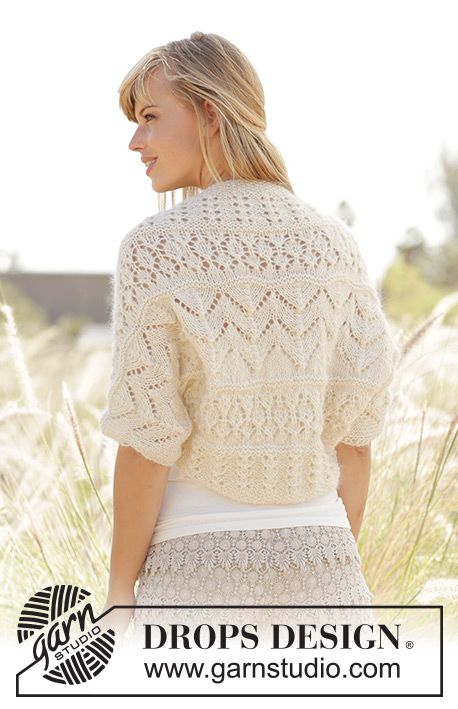 |
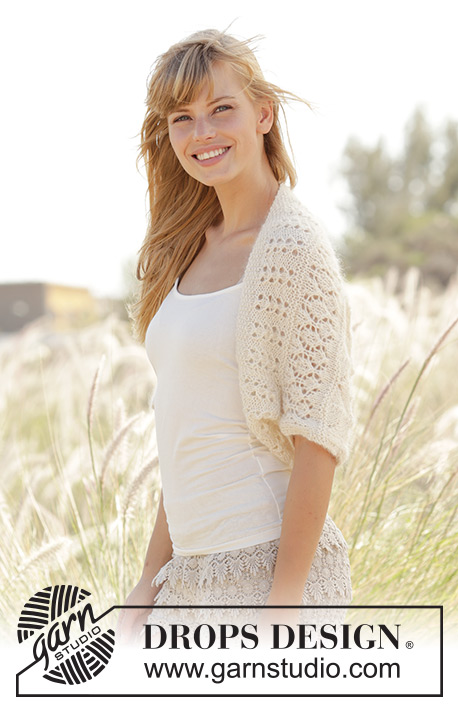 |
||||||||||||||||||
Knitted DROPS shoulder piece with lace pattern in ”BabyMerino” and ”Kid-Silk”. Size: S - XXXL.
DROPS Extra 0-1276 |
|||||||||||||||||||
|
GARTER ST (back and forth): K all rows. 1 ridge = 2 rows K. MOSS ST (back and forth): Row 1: * K 1, P 1 *, repeat from *-*. Row 2: K over P and P over K. Repeat 2nd row. PATTERN: See diagrams A.1 to A.6. The diagrams show all rows in pattern seen from RS. ---------------------------------------------------------- SHOULDER PIECE: Worked back and forth on needle. Cast on 109-115-127-139 sts on straight needles or circular needle size 5 mm with 1 strand Baby Merino and 1 strand Kid-Silk (= 2 strands). Work in MOSS ST - see explanation above. When piece measures 3 cm, work according to diagram A.1-A.2 as follows: Work 2 edge sts in moss st, repeat A.1 17-18-20-22 times, A.2 over 3 sts and 2 edge sts in moss st (work edge st in moss st the entire piece). Work diagram 3-4-5-6 times in total vertically. REMEMBER THE KNITTING TENSION Now work 2 ridges in GARTER ST - see explanation above, AT THE SAME TIME cast on new sts in each side as follows: Work 1 ridge, on next ridge cast on 10 new sts at the end of every row = 129-135-147-159 sts. Then work as follows: Work 2 edge sts in moss st, A.3 over 5 sts, repeat A.4 19-20-22-24 times, A.5 over 6 sts and 2 edge sts in moss st. Work diagram 1 time vertically. Work 2 ridges, and work 2 rows in stocking st. Work according to diagram A.6 as follows: Work 2 edge sts in moss st, 2-5-5-5 sts in stocking st, repeat A.6 10-10-11-12 times, 3-6-6-6 sts in stocking st and 2 edge sts in moss st. Work diagram 3-4-3-4 times in total vertically. Work 2 rows in stocking st and then 2 ridges. Work diagram A.3-A.5 as follows: Work 2 edge sts in moss st, A.3 over 5 sts, repeat A.4 19-20-22-24 times, A.5 over 6 sts and 2 edge sts in moss st. Work diagram 1 time vertically. Now work 2 ridges, AT THE SAME TIME cast off sts in each side as follows: Work 1 ridge, on next ridge cast off the first 10 sts at the beg of every row = 109-115-127-139 sts. Work diagram A.1-A.2 as follows: Work 2 edge sts in moss st, repeat A.1 17-18-20-22 times, A.2 over 3 sts and 2 edge sts in moss st. Work diagram 3-4-5-6 times in total vertically. Then work moss st for 3 cm. Loosely cast off. ASSEMBLY: Sew side and seam under sleeves in one in front loop of outermost st - see dotted line on chart. |
|||||||||||||||||||
Diagram explanations |
|||||||||||||||||||
|
|||||||||||||||||||
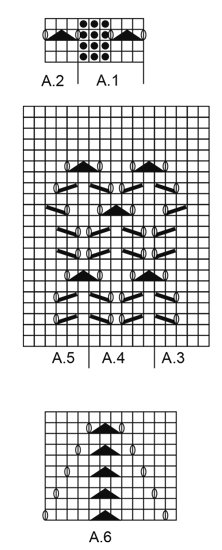 |
|||||||||||||||||||
 |
|||||||||||||||||||
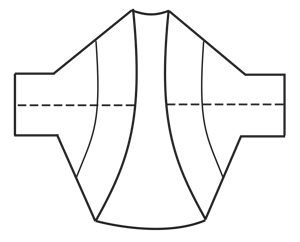 |
|||||||||||||||||||
Have you finished this pattern?Tag your pictures with #dropspattern or submit them to the #dropsfan gallery. Do you need help with this pattern?You'll find 16 tutorial videos, a Comments/Questions area and more by visiting the pattern on garnstudio.com. © 1982-2025 DROPS Design A/S. We reserve all rights. This document, including all its sub-sections, has copyrights. Read more about what you can do with our patterns at the bottom of each pattern on our site. |
|||||||||||||||||||







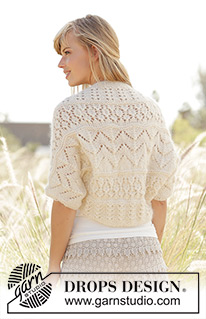
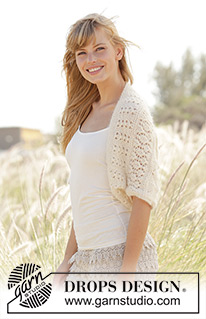
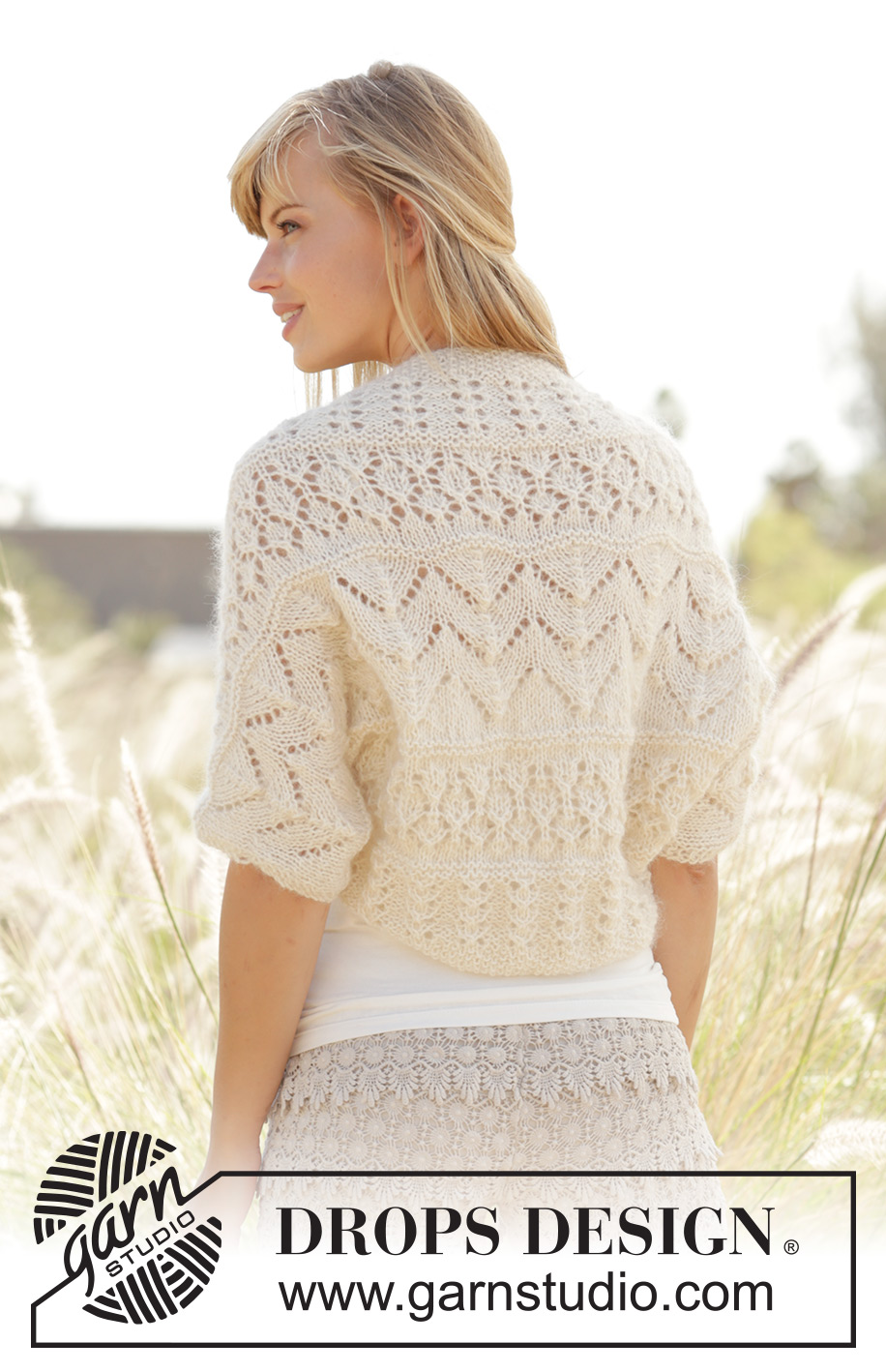
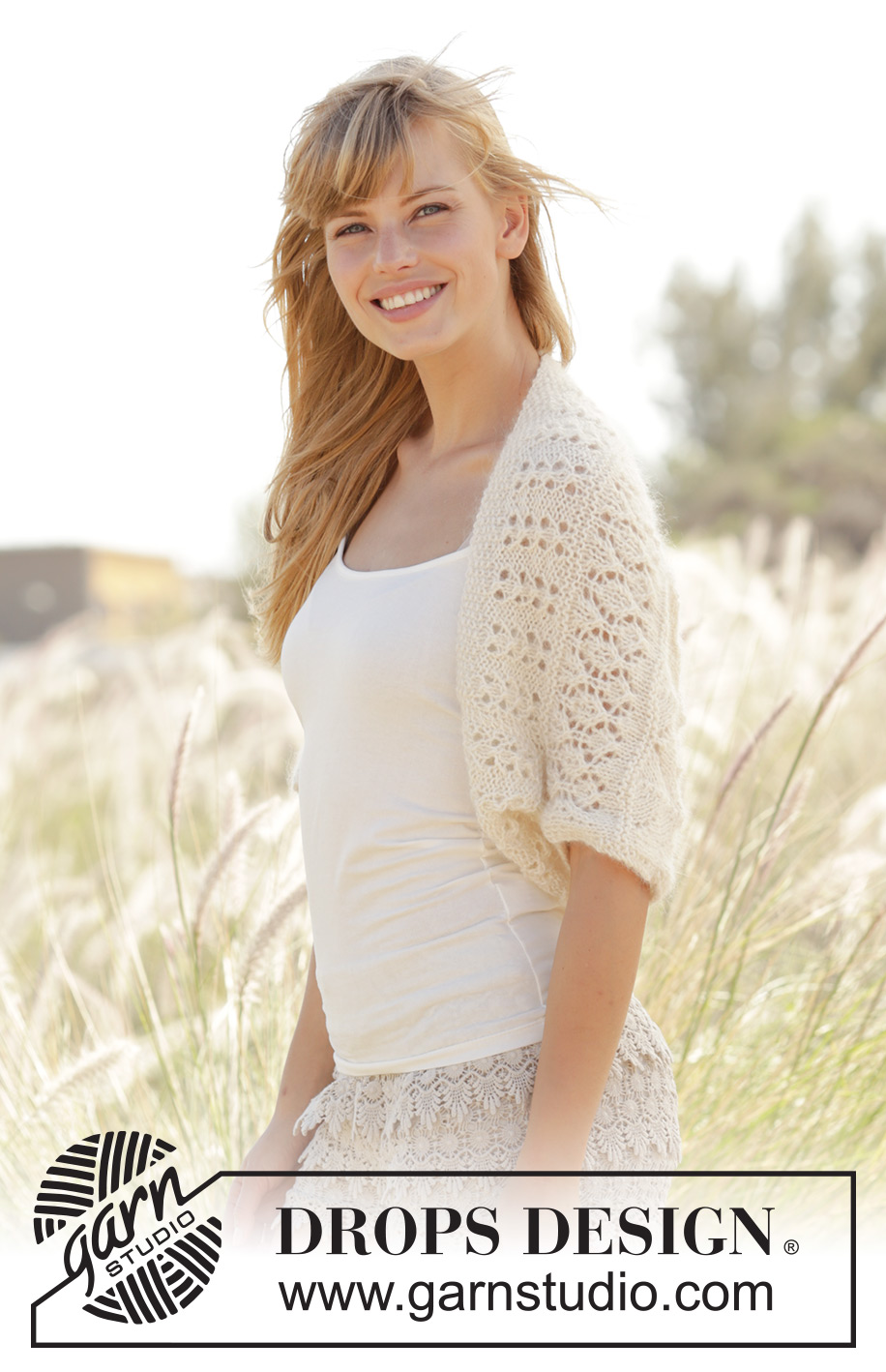



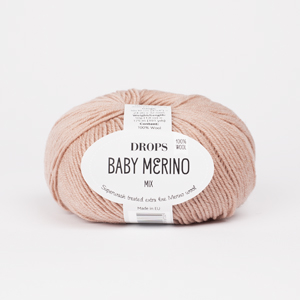
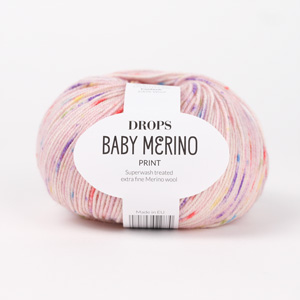







































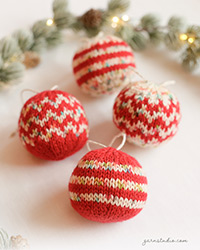



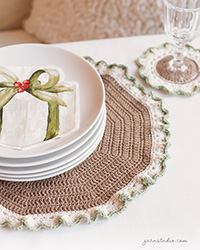

Post a comment to pattern DROPS Extra 0-1276
We would love to hear what you have to say about this pattern!
If you want to leave a question, please make sure you select the correct category in the form below, to speed up the answering process. Required fields are marked *.